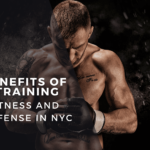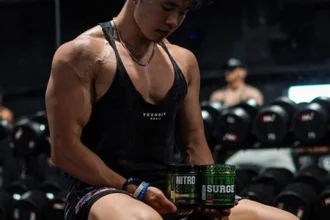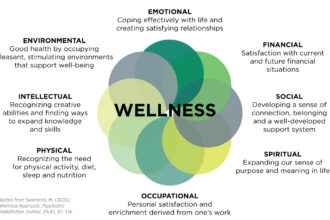Conditioning is the bridge between fear and confidence, between vulnerability and capability. Across Los Angeles Life-Changing Role — from Venice Beach to downtown L.A. — the right conditioning program converts ordinary bodies into practical tools for personal protection. This article explains how conditioning shapes both the physical and psychological foundations of self-protection, where Angelenos can train, and how to build a resilient program that works in the real world.
Why Conditioning Is the Core of Personal Protection
Physical conditioning—strength, power, endurance, speed, and mobility—gives people the physical capacity to escape, resist, or control threatening situations. Research and expert guidance repeatedly show that combining strength training with aerobic fitness and mobility work improves overall safety, longevity, and functional ability. :contentReference[oaicite:0]{index=0}
Conditioning vs. Technique: Why You Need Both
Technique (like a martial art technique) still matters — but in street-level encounters, technique without conditioning is fragile. Conditioning ensures your body can execute techniques under stress, fatigue, and pain. Conditioning is what turns practiced moves into reliable reactions when adrenaline spikes and time slows down.

How Conditioning Changes Your Brain
Hard conditioning trains your nervous system to tolerate stress. Repeated exposure to controlled intensity (intervals, circuit work, scenario drills) reduces panic responses and makes decision-making faster under pressure. Over weeks, that nervous-system training yields calmer, more decisive reactions in real threats.
Core Strength: The Hidden Survival Engine
A strong core stabilizes the body for throws, takedowns, escapes, and pushing through a crowd. Conditioning programs that prioritize loaded carries, anti-rotation drills, and plank progressions convert abdominal strength into practical resilience.
Power and Explosiveness for Quick Escapes
Explosive conditioning — sprint intervals, jump training, kettlebell swings — develops fast-twitch muscle fibers used for sprinting away or breaking free from grips. In many situations, the smartest defense is to create distance quickly, and explosive conditioning provides that edge.
Endurance: The Unexpected Self-Defense Advantage
Encounters are rarely a single strike; they can be prolonged. Endurance conditioning—via interval runs, rowing, or circuit training—gives you the stamina to sustain effort long enough to escape or get help. Endurance also reduces panic by boosting confidence in your ability to outlast an opponent.
Mobility and Flexibility: Injury Prevention That Saves You
Mobility training (dynamic stretching, joint flows, yoga) keeps you functional and prevents injuries during rapid movements or grappling situations. A flexible body is better at recovering from awkward positions and avoiding sprains that could otherwise immobilize you.
Grip Strength: Don’t Underestimate Your Hands
Hand strength matters more than many people assume. Whether holding onto railings, pushing an attacker away, or controlling clothing grips, a conditioned grip gives tactical options that can turn a bad moment into an escape opportunity.
Balance and Proprioception: Stay Upright, Stay Safe
Conditioning that includes single-leg work, unstable-surface training, and coordination drills improves balance and body awareness. In fights or slips on uneven sidewalks, the person who stays upright typically wins the encounter.
Practical Conditioning Tools You Can Do Anywhere
You don’t need fancy equipment to get fight-capable. Sprints, burpees, push-ups, lunges, pull-ups, and stair runs (ubiquitous in Los Angeles transit hubs) translate directly to survival movement. Consistent, simple workouts often beat sporadic, complicated regimens.
How Strength Training Extends Personal Safety
Strength training builds muscle that protects joints and contributes to shock absorption—so you’re less likely to be injured when pushed, shoved, or forced to carry weight while escaping. Harvard and public-health research emphasize the mortality and functional benefits of muscle-strengthening activity. :contentReference[oaicite:1]{index=1}
Conditioning for Different Age Groups in L.A.
Conditioning should be age-appropriate. Young adults can tolerate higher intensity; older adults should prioritize balance, low-impact strength, and mobility. Many studios in Los Angeles offer tailored classes for different age brackets and fitness baselines.
Women’s Conditioning for Personal Protection
Women’s conditioning programs intertwine strength, technique, and situational drills. Programs such as dedicated women’s self-defense focus on leverage, explosive escapes, and confidence-building, often integrating conditioning elements that suit biomechanics and real-world scenarios. (See local women’s programs like SHIELD for examples.) :contentReference[oaicite:2]{index=2}
Psychological Conditioning: Stress Inoculation
Scenario-based conditioning (pressure-testing drills, role-play, timed escapes) conditions the mind to tolerate fear. Repeated exposure in safe environments reduces fight-or-flight paralysis and trains the brain to prioritize escape and help-seeking when appropriate.
Where to Train in Los Angeles: Mix of Gyms & Programs
Los Angeles has a robust ecosystem of conditioning and self-protection providers: Krav Maga centers, BJJ academies, CrossFit and functional studios, and women-only self-defense organizations. These options let you combine conditioning with practical drills under expert supervision. For example, Krav Maga Los Angeles and Krav Maga Worldwide have structured conditioning + self-defense classes across the region. :contentReference[oaicite:3]{index=3}
Map: Recommended Training Hubs Across Los Angeles
https://www.google.com/maps?q=Krav+Maga+Los+Angeles&output=embed https://www.google.com/maps?q=Renzo+Gracie+Los+Angeles&output=embed https://www.google.com/maps?q=Rise+Movement+Los+Angeles&output=embed
Tip: Click each map to open a full Google Maps listing with addresses, reviews, and class times.
How to Build a 90-Day “From Weakness to Warrior” Conditioning Plan
1) Weeks 1–4: foundation — mobility, bodyweight strength, light interval cardio. 2) Weeks 5–8: build — add progressive resistance (kettlebells, sled pushes), short sprint intervals, partner drills. 3) Weeks 9–12: test — scenario-based conditioning, mixed-modal circuits, and endurance days. Consistency, progressive overload, and recovery are the three pillars.
Sample Weekly Template for Busy Angelenos
• Monday: Strength (compound lifts or bodyweight progressions) • Tuesday: Interval sprints + mobility • Wednesday: Technique + conditioning (Krav Maga or BJJ class) • Thursday: Active recovery (yoga/walking) • Friday: Power (plyometrics, kettlebell swings) • Saturday: Endurance (longer cardio or circuit) • Sunday: Rest or light mobility
Nutrition & Recovery That Fuel Conditioning
Conditioning requires adequate fueling: protein for repair, carbohydrates for high-intensity work, and fats for hormonal balance. Hydration, sleep, and active recovery (foam rolling, short walks) complete the system—without them, gains stall and injury risk increases. Trusted health sources highlight the importance of combined strength and aerobic work for longevity and function. :contentReference[oaicite:4]{index=4}
Technology That Enhances Conditioning
Wearables and training apps help track intensity, recovery, and progress. Many L.A. studios integrate heart-rate guided interval work and metabolic testing to individualize conditioning for better outcomes.
How Conditioning Works in Real Confrontations
Conditioning allows you to execute escape techniques effectively when breathing is rapid and muscles ache. It increases the likelihood you’ll be able to sprint, shield, or control an attacker long enough to reach safety or assistance.
Safety First: Training Smart in Los Angeles
Always train under certified coaches, especially for scenario-based drills. Proper progressions and recovery minimize injuries and ensure conditioning actually increases your protection rather than creating vulnerability.
Stories from the City: Real People, Real Results
Many Angelenos report life-changing results — from a single mother who finally felt confident walking home at night to a young professional who used conditioning to escape a dangerous confrontation. Conditioning builds options: run, resist, or control as the moment requires.
Combining Conditioning with Legal & Situational Training
Conditioning must be coupled with education: situational awareness, de-escalation techniques, and knowledge of local laws. A smart program blends physical readiness with practical decision-making.
Finding the Right Studio Fit in L.A.
Visit a few classes before committing. Look for coaches who explain progressions, prioritize safety, and offer clear conditioning plans—these are hallmarks of quality programs from downtown L.A. to the Westside.
Cost & Access: Conditioning on Any Budget
Conditioning can be budget-friendly. City parks, community centers, and pay-as-you-go classes provide access. Invest where coaching quality matters; basic conditioning fundamentals are inexpensive but the right guidance multiplies value.
How Often Should You Re-Test Your Progress?
Every 8–12 weeks is a good cadence for re-testing strength, sprint times, and endurance. This keeps programming honest and helps you adjust training to match real-world demands.
Local Resources & Programs to Explore
• Krav Maga Los Angeles — combined conditioning and street-defense classes. :contentReference[oaicite:5]{index=5} • Krav Maga Worldwide (West LA center) — high-density training facilities with conditioning tracks. :contentReference[oaicite:6]{index=6} • Women-focused programs (SHIELD, R.A.D.) — integrate leverage-based techniques and conditioning for female students. :contentReference[oaicite:7]{index=7}
Want a Personalized Plan?
If you’d like a 90-day personalized conditioning plan tailored to your schedule, injuries, and access to equipment, contact us and we’ll build it with you.
Further Reading & Trusted Sources
Learn more about why strength and conditioning matter from Harvard Health and public-health research on muscle-strengthening activity. :contentReference[oaicite:8]{index=8}
Explore more articles on conditioning & self-protection →
External links referenced in this article: Krav Maga Los Angeles, Krav Maga Worldwide (West LA), SHIELD Women’s Self Defense System, R.A.D. Self Defense information, Harvard Health on exercise. Maps use Google Maps search embeds.
© ihoxi.xyz — From Weakness to Warrior content last updated:
The Rise of Conditioning in Self-Defense
Conditioning is no longer just about aesthetics or athletic performance—it has become a cornerstone of personal protection. In Los Angeles, where diverse cultures and lifestyles converge, the demand for self-defense training rooted in conditioning has skyrocketed. Fitness regimens once designed only for athletes are now empowering everyday citizens to face urban challenges with confidence. As the city grows more dynamic, conditioning becomes an essential shield against unpredictability.
Why Los Angeles is the Perfect City for Conditioning
Los Angeles is a city of motion. From bustling downtown districts to coastal boardwalks, Angelenos are constantly on the move. This makes LA an ideal environment for developing conditioning that mirrors real-world challenges. Whether it’s sprinting through crowded sidewalks, climbing urban obstacles, or simply staying alert in nightlife hotspots, the city’s energy fuels functional fitness. Training here prepares individuals for both physical confrontation and the demands of daily survival.
The Connection Between Conditioning and Confidence
True self-defense starts long before a conflict occurs—it begins with confidence. Conditioning improves stamina, strength, and mental resilience, giving people the courage to stand tall in difficult situations. In Los Angeles, where appearances often shape perceptions, conditioning also reshapes inner strength. The shift from weakness to warrior is as much psychological as it is physical.

Strength Training as a Foundation for Protection
Strength training remains one of the most powerful conditioning tools for self-defense. Resistance exercises such as deadlifts, squats, and push presses enhance raw power, which is crucial for breaking free from grips or holding ground during a confrontation. Los Angeles gyms like Gold’s Gym Venice have long been leaders in strength-based conditioning. For those training in personal protection, this foundation ensures unshakable resilience.
Endurance Conditioning for Real-Life Survival
Confrontations are often unpredictable, lasting longer than expected. Endurance conditioning helps individuals stay strong under prolonged stress. Runners who train along the Los Angeles River paths or cyclists pushing through Griffith Park gain cardiovascular resilience that transfers directly to survival scenarios. Endurance training is not just about sport—it’s about the ability to keep fighting or fleeing when it matters most.
Agility Training in Urban Environments
Agility is essential for navigating crowded streets, evading danger, or countering sudden attacks. Conditioning drills like ladder runs, cone drills, and parkour-inspired movements are popular across Los Angeles parks and gyms. Local facilities such as LA City Parks provide excellent spaces for agility conditioning. This agility ensures faster reactions, sharper footwork, and improved awareness in self-defense situations.
Martial Arts Conditioning in Los Angeles
Los Angeles is home to a thriving martial arts scene, from Brazilian Jiu-Jitsu academies to Muay Thai gyms. Conditioning within these disciplines goes beyond fighting techniques—it builds stamina, toughness, and explosive movement. Schools such as 10th Planet Jiu Jitsu emphasize functional conditioning as a pillar of their training. This ensures practitioners are not only skilled in technique but also physically prepared for real-world defense.
Role of Mental Conditioning in Self-Defense
Mental conditioning is just as vital as physical strength. Visualization techniques, controlled breathing, and stress inoculation prepare individuals for the psychological strain of confrontation. In Los Angeles, where fast-paced lifestyles can heighten anxiety, mental conditioning provides balance. Developing focus and composure transforms panic into control, turning weakness into warrior-like resolve.
Functional Training for Real-World Situations
Functional training emphasizes movements that mimic real-life challenges. Carrying sandbags, climbing ropes, or performing compound lifts all build transferable strength. Los Angeles gyms such as Deuce Gym specialize in functional fitness, preparing clients not only for athletics but also for survival scenarios. These practical workouts sharpen readiness for any unexpected event in daily life.
The Influence of Hollywood on Conditioning Trends
Hollywood has played a massive role in popularizing conditioning for self-defense. Action stars often undergo intense training regimens that blend conditioning with martial arts. This influence has filtered into mainstream gyms across Los Angeles, inspiring locals to train like warriors. From film sets to fitness studios, the conditioning culture has expanded far beyond the big screen.
Conditioning for Women’s Empowerment
Women across Los Angeles are embracing conditioning not just for fitness but for empowerment. Self-defense bootcamps and conditioning classes designed for women focus on practical strength, situational awareness, and resilience. Programs at gyms like Krav Maga Worldwide combine conditioning with real-world protection skills. These approaches allow women to transform fear into confidence through functional training.
Youth Programs and Early Conditioning
Conditioning is increasingly being introduced to young people in Los Angeles. Youth martial arts schools and sports academies integrate conditioning into training, helping kids build confidence and awareness from an early age. Parents recognize that conditioning provides children with tools for both athletic success and personal protection. This early foundation fosters resilience for a lifetime.
Outdoor Conditioning in Los Angeles
The natural landscapes of Los Angeles provide endless opportunities for outdoor conditioning. From hill sprints at Runyon Canyon to beach workouts in Santa Monica, the city itself is a training ground. Outdoor conditioning offers an element of unpredictability, teaching adaptability that mirrors real-world scenarios. This style of training also connects individuals with nature while strengthening their bodies for protection.
The Science Behind Conditioning and Protection
Conditioning improves neuromuscular coordination, reaction times, and resilience under stress. Studies highlight that individuals with higher conditioning levels are more capable of managing confrontation. Organizations such as the National Strength and Conditioning Association provide resources on evidence-based training approaches. Science confirms that conditioning is not just exercise—it is a life-saving practice.
Conditioning as a Lifestyle in Los Angeles
For many Angelenos, conditioning is more than training—it is a lifestyle. The integration of gym culture, outdoor fitness, and martial arts creates a holistic approach to living strong. This lifestyle extends beyond workouts into nutrition, recovery, and mindfulness. In a city as vibrant as LA, conditioning becomes part of one’s identity and daily routine.
Google Maps: Conditioning Centers in Los Angeles
Internal Resources on Conditioning
For readers seeking deeper insights into conditioning and personal protection, visit our internal guides on fitness training and self-defense essentials. These resources connect practical workouts to real-life personal safety, expanding on the principles discussed here.
Conclusion: The Path from Weakness to Warrior
Conditioning is the bridge between vulnerability and strength. In Los Angeles, it transforms ordinary lives into empowered ones, equipping individuals to face challenges with confidence. From gyms and martial arts academies to outdoor training spots, conditioning has become a cultural force across the city. It is not just about exercise—it is about reclaiming control, ensuring safety, and living as a warrior in every sense.
Frequently Asked Questions: The Life-Changing Role of Conditioning in Personal Protection
How does the Life-Changing Role of conditioning impact self-defense training?
The Life-Changing Role of conditioning in self-defense lies in its ability to transform raw fitness into real-world readiness. Unlike traditional workouts that focus solely on appearance, conditioning equips the body with strength, endurance, and agility that directly apply to personal protection. In Los Angeles, where unpredictable urban challenges exist daily, this Life-Changing Role becomes a foundation for survival, giving individuals the resilience and power to react effectively in high-pressure scenarios.
Why is the Life-Changing Role of conditioning so important in Los Angeles specifically?
The Life-Changing Role of conditioning in Los Angeles is amplified by the city’s diverse environments—from crowded city streets to sprawling suburban landscapes. Residents face unique challenges, including navigating nightlife, public transit, and outdoor spaces where self-defense may become essential. Conditioning prepares people for these unpredictable situations, making it a vital asset in urban living. Its Life-Changing Role is to provide both confidence and physical readiness in a fast-paced metropolitan hub.
Can the Life-Changing Role of conditioning benefit women in self-defense?
Yes, the Life-Changing Role of conditioning for women is profound. Conditioning empowers women with strength, stamina, and confidence to protect themselves in real-world scenarios. In Los Angeles, women are increasingly turning to conditioning-focused programs like Krav Maga and strength training to ensure they are not only fit but capable of defending themselves. This Life-Changing Role extends beyond physical safety—it fosters empowerment, self-esteem, and mental resilience.
What makes the Life-Changing Role of conditioning different from regular fitness?
The Life-Changing Role of conditioning differs from standard fitness because it is highly functional. Regular fitness may prioritize aesthetics or isolated muscle development, while conditioning builds strength, endurance, and mobility that translate into survival skills. In self-defense, the Life-Changing Role of conditioning prepares the body for real combat stressors, such as quick reflexes, explosive movements, and the stamina to keep going under pressure.
Does the Life-Changing Role of conditioning include mental preparation?
Absolutely. The Life-Changing Role of conditioning is not limited to physical training—it also encompasses mental conditioning. Visualization, focus, and stress-management techniques are part of this holistic approach. In Los Angeles, where life is fast-paced and stressful, the Life-Changing Role of conditioning sharpens mental resilience, enabling individuals to remain calm and strategic in a self-defense encounter.
How does the Life-Changing Role of conditioning support martial arts practice?
The Life-Changing Role of conditioning is deeply integrated with martial arts. Martial arts require explosive power, agility, and stamina—all of which conditioning develops. In Los Angeles, martial arts academies like jiu-jitsu and Muay Thai gyms incorporate conditioning as part of their curriculum because they recognize its Life-Changing Role in preparing practitioners for both competitions and real-life defense scenarios.
What is the Life-Changing Role of conditioning for older adults seeking protection?
The Life-Changing Role of conditioning extends to older adults by offering safe and functional movements that improve balance, mobility, and reaction times. In Los Angeles, where senior citizens also face urban risks, conditioning empowers them to remain strong and independent. This Life-Changing Role allows older adults to not only feel confident in daily activities but also better handle unexpected situations requiring quick response.
How does the Life-Changing Role of conditioning affect street awareness?
The Life-Changing Role of conditioning sharpens physical and mental alertness, making individuals more aware of their surroundings. In a busy city like Los Angeles, this awareness is critical for identifying potential threats and avoiding dangerous situations. By training the body to react faster and move efficiently, the Life-Changing Role of conditioning directly enhances situational awareness and preparedness.

Can the Life-Changing Role of conditioning reduce fear in dangerous situations?
Yes, the Life-Changing Role of conditioning significantly reduces fear by replacing uncertainty with preparedness. When individuals know they have the strength, stamina, and skills to defend themselves, fear is replaced with confidence. In Los Angeles, where confrontations can arise in diverse settings, this Life-Changing Role ensures that fear does not paralyze individuals but instead fuels decisive, empowered actions.
What is the Life-Changing Role of conditioning in youth self-defense training?
The Life-Changing Role of conditioning for youth is vital in building early confidence, physical resilience, and discipline. Programs in Los Angeles introduce conditioning into martial arts or sports to ensure young people are not only fit but also capable of defending themselves. This Life-Changing Role goes beyond safety—it builds lifelong skills in perseverance, responsibility, and self-confidence.
How does the Life-Changing Role of conditioning support community safety?
The Life-Changing Role of conditioning benefits not just individuals but entire communities. When more people are conditioned and capable of self-defense, neighborhoods become stronger, more alert, and less vulnerable to crime. In Los Angeles, community fitness and self-defense workshops highlight the Life-Changing Role conditioning plays in creating safer environments where residents support one another in times of need.
Can the Life-Changing Role of conditioning prepare people for emergencies beyond self-defense?
Yes, the Life-Changing Role of conditioning prepares people for emergencies such as natural disasters or rescue situations. The endurance, strength, and adaptability gained through conditioning are applicable when carrying heavy loads, climbing obstacles, or helping others. In Los Angeles, where earthquakes and fires are part of the landscape, the Life-Changing Role of conditioning ensures individuals are ready to act decisively in crises.
What is the Life-Changing Role of conditioning in women’s empowerment movements?
The Life-Changing Role of conditioning has become a central pillar in women’s empowerment across Los Angeles. Conditioning programs designed for women emphasize strength, resilience, and real-world self-defense skills. This Life-Changing Role empowers women to reclaim their independence and safety, turning fitness into a tool for both health and personal protection.
How does the Life-Changing Role of conditioning tie into recovery and resilience?
The Life-Changing Role of conditioning also includes recovery, teaching individuals how to bounce back from both physical strain and emotional stress. In Los Angeles, where high-stress lifestyles are common, conditioning regimens focus on rest, mindfulness, and injury prevention alongside performance. This Life-Changing Role ensures long-term resilience, keeping people strong, balanced, and prepared for anything.
Why is the Life-Changing Role of conditioning considered essential for modern living?
The Life-Changing Role of conditioning is essential for modern living because it bridges fitness with survival, aesthetics with function, and strength with mental clarity. In a city like Los Angeles, where daily life can be unpredictable, this Life-Changing Role ensures individuals are not only healthier but also safer and more capable of handling adversity. Conditioning is more than training—it is a transformative lifestyle for thriving in today’s world.





